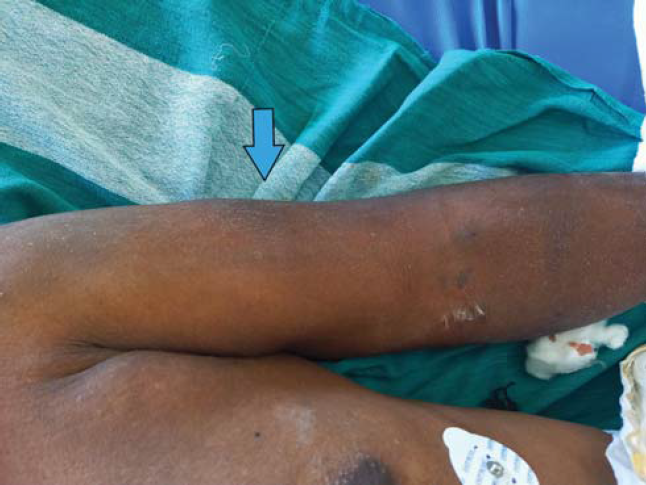A 56-year-old man from a poor socioeconomic background was brought to the emergency department in a comatose state. No details regarding his previous medical history were available. On examination, he was found to have an acidotic breathing pattern and uraemic fetor. A whitish powdery dust was found on his skin mostly over the face, neck, chest and upper limbs (Figs 1 and 2). Laboratory investigations showed markedly deranged renal function (blood urea nitrogen 245 mg/dl and serum creatinine 19.5 mg/dl). He was treated with intermittent haemodialysis and recovered completely.

Export to PPT

Export to PPT
Uraemic frost is a rare dermatological manifestation of uraemia. The urea that is secreted by eccrine sweat glands in high concentration gets crystalized on the skin surface when the water content evaporates. The urea transporters expressed in the skin may play a role in the development of uraemic frost. In addition, damage to cutaneous microvasculature and pilosebaceous units in chronic kidney disease may also explain the presence of high urea in the skin. The entity has almost disappeared from modern day nephrology practice due to the availability of effective renal replacement therapy.
Comments (0)